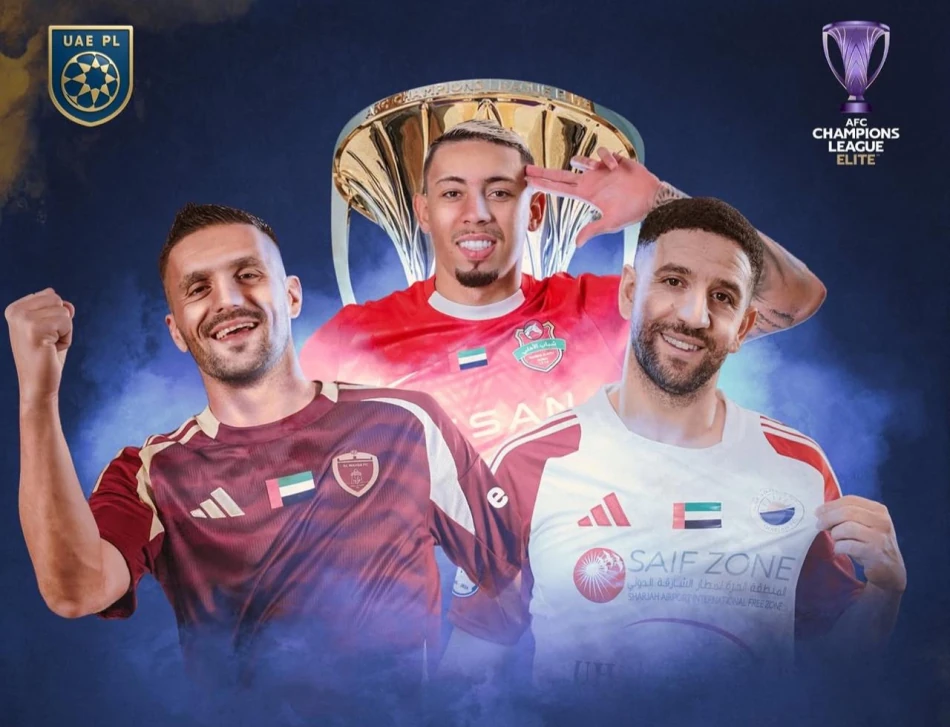
Fierce Clashes Await Al-Ahly and Sharjah's Young Stars in the Asian Elite Clash
UAE Clubs Face Saudi Powerhouses in Grueling AFC Champions League Elite Draw
Three UAE clubs will navigate a minefield of regional football giants after Thursday's AFC Champions League Elite draw in Kuala Lumpur served up a brutal group stage featuring Saudi Arabia's top teams, including defending champions Al-Hilal. The 2025-26 tournament promises to test the Gulf region's competitive balance as oil-rich leagues clash for continental supremacy.
A Draw That Reflects Regional Football Hierarchies
The seeding system told its own story about Middle Eastern football's power dynamics. Shabab Al-Ahli earned top-tier status alongside Saudi champions Al-Ahli, while Sharjah and Al-Wahda were relegated to the second tier alongside Saudi giants Al-Hilal and Al-Ittihad. This classification suggests UAE clubs, despite significant investment, still trail their Saudi counterparts in continental recognition.
Shabab Al-Ahli faces perhaps the tournament's most daunting group, squaring off against Al-Hilal, Iran's Tractor, Uzbekistan's Nasaf, Al-Ahli Saudi, and Qatar's Al-Gharafa and Al-Duhail. Meanwhile, Sharjah and Al-Wahda encounter similarly challenging paths through a gauntlet of established regional powers.
Saudi Arabia's Stranglehold on Asian Football
The draw underscores Saudi Arabia's growing dominance in Asian club competition, with three teams positioned as serious title contenders. Al-Ahli's recent championship victory and Al-Hilal's consistent continental presence reflect the Saudi Pro League's transformation following massive player acquisitions and infrastructure investments since 2021.
This mirrors broader regional trends where sovereign wealth funds have reshaped football landscapes. The UAE's own investments in player development and foreign talent acquisition now face their sternest test against Saudi Arabia's accelerated spending spree that brought global superstars like Cristiano Ronaldo and Karim Benzema to the region.
Format Changes Signal Commercial Ambitions
The tournament's restructured format, featuring 24 teams split between East and West Asia, with knockout rounds centralized in Saudi Arabia from April 17-25, represents a significant shift toward commercial optimization. This mirrors UEFA's Champions League evolution, prioritizing television revenues and sponsor accessibility over traditional home-and-away formats.
The decision to host final rounds exclusively in Saudi Arabia suggests the kingdom's growing influence extends beyond player acquisitions to tournament hosting rights—a strategy that positions Riyadh as Asian football's de facto capital.
Market Implications and Regional Rivalry
For broadcasters and sponsors, this draw delivers maximum drama. UAE-Saudi matchups guarantee high viewership across the Gulf, while the compressed final rounds create a festival atmosphere that enhances commercial value. The format change signals Asian football's attempt to match European competition's revenue-generating potential.
The competitive landscape also reflects broader geopolitical dynamics, with Qatar's three representatives and Iran's Tractor adding layers of regional rivalry that extend far beyond football. These matchups will serve as soft power demonstrations for nations using sports to project influence.
The Path Forward for UAE Football
The September 15 tournament start gives UAE clubs limited time to address squad deficiencies exposed by this challenging draw. Success against Saudi opposition would validate the UAE's football investment strategy, while failure might accelerate calls for increased spending to match regional rivals.
With only the top eight from each region advancing to the Round of 16, margin for error remains minimal. The draw suggests that UAE clubs' continental ambitions will be measured not just against Asian standards, but specifically against Saudi Arabia's new football reality—one where success increasingly demands matching their neighbors' financial commitment to the beautiful game.
 Sara Khaled
Sara Khaled







